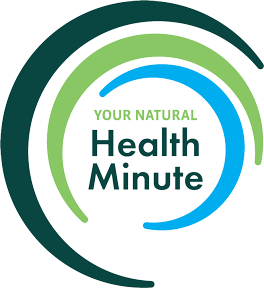Why do we need a multi?
The multivitamin mineral formula is widely accepted as a must use daily supplement and for good reason. Most of us appreciate that we’re not getting all the nutrients we need from diet alone. That’s likely why, according to Statistics Canada, roughly a quarter of Canadians use multivitamins.1 One can think of a multi as an insurance policy against the nutrient deficiencies that will certainly arise due to our poor dietary habits. Sadly, heavily processed, nutrient poor foods dominate the diets of many. We consume countless empty calories and think that by simply eating just a few servings of fruits and vegetables we’re protected. To further complicate matters, many of today’s foods are heavily processed limiting their nutrient levels. Countless studies have shown that food irradiation2, microwaving3,4,5, canning6, freezing7 and poor soil nutrient levels8,9 are all players in the nutrient decline of today’s foods.
What are the benefits of a multi?
An ever-growing body of scientific evidence has shown that multivitamins can reduce the risk of numerous diseases; cardiovascular disease10, cancer11, mental decline12, type II diabetes13, age-related macular degeneration14, neural tube defects15 and bone health to name a few16,17,18. A recent publication by Health Canada entitled “Do Canadian Adults Meet Their Nutrient Requirements Through Food Intake Alone” found 10-35% of adult Canadians had nutrient levels below the estimated average requirement. A Harvard publication accurately states “A multivitamin-multimineral supplement can fill in micronutrient gaps in your diet.”19 Although multivitamins are designed to supplement and not replace a balanced diet, the need for this support has never been so great.
What should we look for in a multi?
Many of the multivitamins on the market have taken a one-size fits all approach. Our age, gender and level of activity should all be factored into the making of a quality multivitamin. For this reason, look for a multi designed to meet all these unique needs. Despite the popularity and convenience of the “high potency one-a-day” tablet many experts agree that one-a-days don’t offer the same level of protection you get from a three-a-day. 20,21 Divided doses throughout the day allow for significantly better absorption. One-a-days are also typically loaded with binders, fillers, flow agents and coatings that may restrict absorption22,23,24. Although multis are no substitute for a balanced diet they can act as an insurance policy against deficiency and ultimately disease.
1 https://www.statcan.gc.ca/pub/82-625-x/2017001/article/14831-eng.htm
2 Canadian Coalition for Nuclear Responsibility http://www.ccnr.org/food_irradiation.html
3 Schrumpf, E. / Charley, H. (1975): Texture of Broccoli and Carrots Cooked By Microwave Energy. – J. Food Science, 40: 1025-29.
4 Quan, R. Et Al. (1992): Effects of Microwave Radiation On Anti-Infective Factors In Human Milk. – Pediatrics. 89 (4): 667-69. [11] Lubec, G. Et Al. (1989): Amino acid Isomerisation and Microwave Exposure. – The Lancet, 9: 1392-93.
5 Blanc, B. H. / Hertel, H. U. ( 1992): Comparative Study About The Influence On Man By Food Prepared Conventionally And In The Microwave-Oven.
6 http://nutritiondata.self.com/topics/processing
7 Nutritional comparison of fresh, frozen, and canned fruits and vegetables Joy C. Rickman, Diane M. Barrett, PhD, Christine M. Bruhn, PhD, Department of Food Science and Technology, University of California- Davis, Davis, CA. 95616
8 Thomas D. A study on the mineral depletion of the foods available to us as a nation over the period 1940 to 1991. Nutr Health 2003; 17(2): 85-115
9 Mayer A-M. Historical changes in the mineral content of fruits and vegetables. Brit Food J 1997;96(6): 207-11
10 J Nutr. 2016 Jun; 146(6): 1235–1240.
11 JAMA. 2012 Nov 14; 308(18): 1871–1880.
12 Adv Nutr. 2013 Nov; 4(6): 644–656
13 J Clin Transl Endocrinol. 2017 Nov 7;10:28-35.
14 Cochrane Database Syst Rev. 2017 Jul 31;7:CD000254.
15 J Obstet Gynaecol Can. 2015 Jun;37(6):534-52.
16 Fairfield, K. M. & Fletcher, R. H. (2002) Vitamins for chronic disease prevention in adults: scientific review. J. Am. Med. Assoc. 287: 3116–3126.
17 High KP. Micronutrient supplementation and immune function in the elderly. Clin Infect Dis. 1999;28:717-22.
18 Barringer, T. A., Kirk ,J. K., Santaniello, A. C. Effect of a Multivitamin and Mineral Supplement on Infection and Quality of Life. Ann Intern Med. 2003;138:365-371.
19 https://www.hsph.harvard.edu/nutritionsource/multivitamin/
20 The Weston A. Price Foundation: http://www.westonaprice.org/healthissues/supplements.html
21 Czap, AL. Townsend Letter For Doctors and Patients, July 1999, Vol.192;Pg. 117-119
22 J Am Pharm Assoc 1997;NS37:397–400.
23 Adv Ther 2000;17:179–83.
24 J Pharm Pharm Sci. 2006;9(1):40-9.

